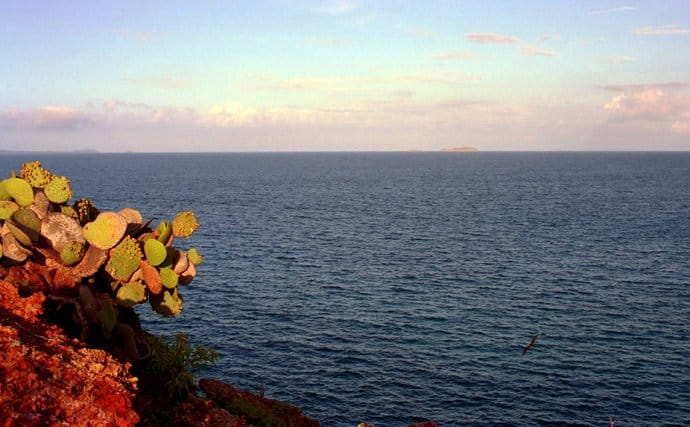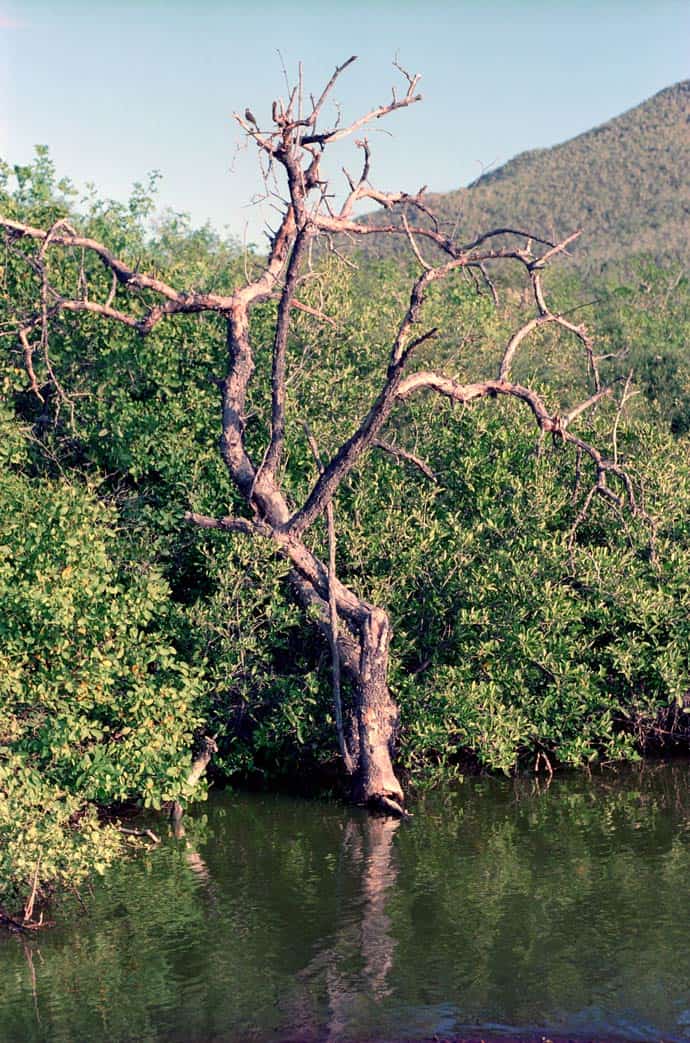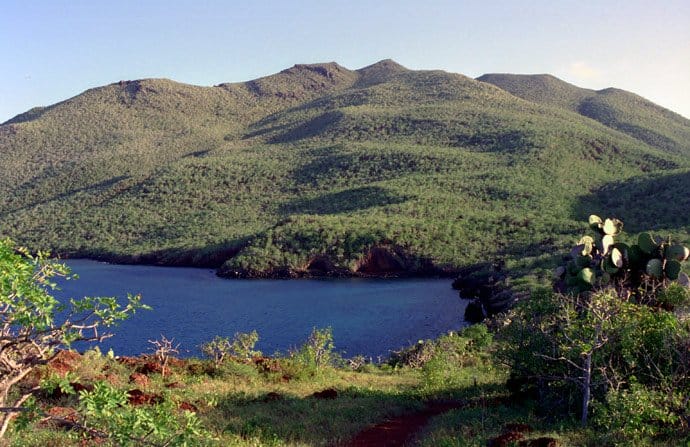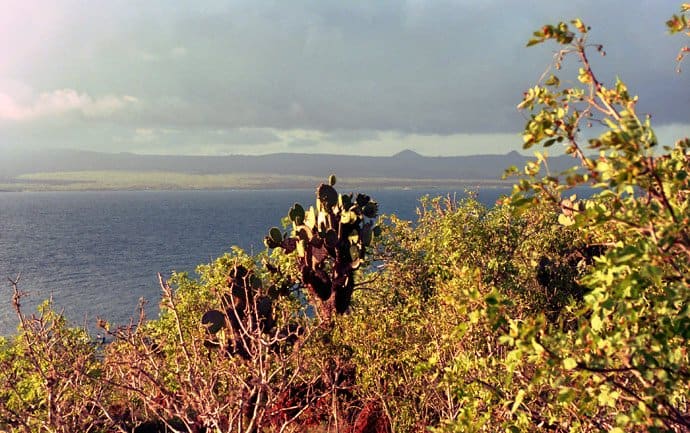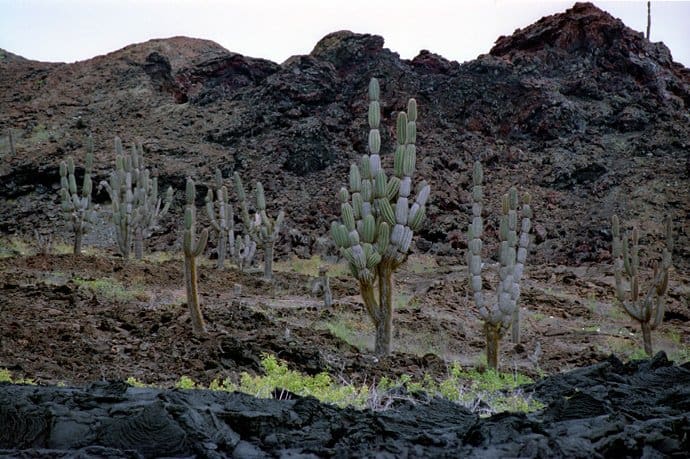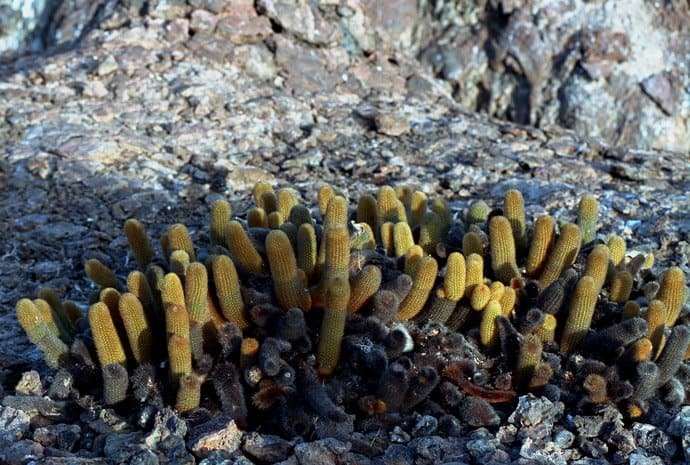Galapagos – Flora
Typical plants of the nearby coastal region are in the splashing area of the salt bush with its long drooping leaves and yellow-green flowers, the dense low mats of the solstice, the slender thorny branches of the small fenugreek with its club-shaped leaves, as well as the flat-topped beach winds and beach grass.
In the low-water and humus-poor coastal areas of the islands there is a whole range of plants that have been able to successfully resist the annual dry spells in the course of evolution. Among the most striking exponents of flora spread on Galápagos visitors often first of all the green mangrove forests in shallow coastal areas. These include the black mangrove with its yellow-brown asymmetric fruits, the reddish branches and fleshy leaves of the red mangrove, the white mangrove spotted on the underside of the leaves, and the small-leaved button mangrove.
The symbol of Galápagos are the mighty Opuntia tree cacti. They have adapted to the given environmental conditions in a unique way. There are six endemic species of these up to 9m high fig or Opuntia cacti. Their pointed shadowless spines protect the meat from predatory ovipositive predators. The rarer, up to 6m high columnar or candelabra cacti, consist only of an endemic, but now evolutionarily split species.
Only the erotic mood of nature can be seen on the lava cactus thriving on bare lava boards. He usually appears in erecting groups, and can be admired in the moon-like volcanic landscape of Bartolomé.

